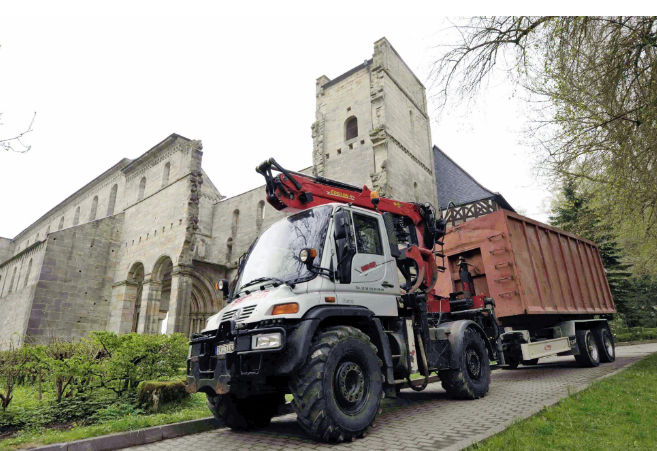The axle is one of the key components of a vehicle chassis, which is directly related to vehicle operation efficiency. From the classification, the axle can be divided into drive axle, steering axle, steering drive axle and support bridge four categories. Among them, the steering bridge and the support bridge (also called the trailer bridge or trailer bridge) do not have the drive shaft, belong to the driven bridge; The drive axle and steering drive axle are more complex and need to bear the power transmission of the vehicle.
Semi Trailer Manufacturers believe that a common drive axle is mainly composed of main reducer, differential, half shaft, drive axle housing and additional components. The specific functions can be divided into the following four parts:
1. The engine torque from the universal transmission device is transmitted to the wheel through the main reducer, differential, half shaft and hub to reduce the speed and increase the torque;
2. change the direction of torque transmission through the bevel gear pair of the main reducer;
3, through the differential to achieve the difference between the two sides of the wheel, to ensure that the inner and outer wheels to turn at different speeds;
4, through the axle housing and wheels, to achieve the bearing and force transmission.
 We frequently say that the single-stage deceleration bridge and double-stage deceleration bridge, is a typical drive axle, but the two kinds of vehicle axle in the structure and performance there are numerous differences.
We frequently say that the single-stage deceleration bridge and double-stage deceleration bridge, is a typical drive axle, but the two kinds of vehicle axle in the structure and performance there are numerous differences.
Semi axle bridge has light dead weight and convenient maintenance, which is suitable for highway load marking transportation.
Single-stage deceleration bridge, commonly known as half axle bridge, because of its large differential housing volume, numerous owners also called it "huge belly bridge".
From the perspective of structure, the half shaft bridge is mainly composed of an active bevel gear (commonly known as Angle teeth) and a driven bevel gear (commonly known as basin teeth), simple structure, its weight is relatively lighter, the failure rate is relatively low, maintenance is also more convenient.
The torque amplification effect of the semi-axle is not outstanding. Because the gear diameter of the main reducer is relatively large and the volume of the axle package is also large, the ground clearance of the vehicle is tiny, which affects the stability of the vehicle. Especially when the road condition is poor, the disadvantage of the semi-axle is more obvious.
These characteristics lead to the semi-axle being more suitable for use in decent working conditions, such as standard load transport, high-speed transport and other driving conditions being relatively flat and standardized transport mainly on the vehicle, not only excellent lightweight performance, low fuel consumption, but also can effectively prevent the shaft head due to long-term high-speed driving caused by elevated temperature phenomenon. The common single-stage reduction bridge types are 435, 440, 457, 459, 460, 469 and so on.
The double - stage deceleration bridge has strong power and excellent usability, which is suitable for complex road conditions.
The Double-stage deceleration bridge, also known as wheel side bridge or wheel reduction bridge, compared with the half-axle bridge, added a group of wheel side deceleration transmission. After two stages of amplification of the torque transferred to the wheel, the driving force is extremely strong. At the same time, the diameter of the wheel side bridge main reducer is reduced, the volume of the bridge package is significantly smaller, the vehicle clearance is large enough, and the stability is excellent.
However, the more complex structure not only affects the transmission efficiency, but also the technical requirements of assembly and maintenance are relatively steep, and the running costs additional oil. When the vehicle is running at a high speed, the heat generated by the friction between the tire and the ground is easy to concentrate at the wheel end because the wheel edge reducer undertakes most of the tasks of changing speed and increasing torsion. As a result, the heat dissipation condition is poor, which is not suitable for long-term and long-distance driving.
In contrast, wheel side bridge is more suitable for construction sites, non-paved roads, muddy roads and other complex conditions of low-speed and heavy-duty transportation, its powerful driving force and elevated performance, can provide stronger escape ability, but also more resistant to construction and durable.
To sum up, the half-axle bridge is suitable for standardized highway logistics transportation, and the transportation condition of excellent road condition and tiny load; wheel - side bridge is more suitable for poor road conditions, climbing, heavy - load mainly on the construction vehicle. Although these two kinds of axle are the same as the drive axle, the owner should comprehensively consider the actual use demand when choosing.
